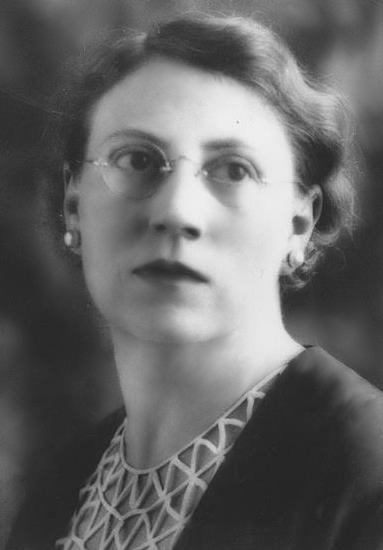BURIED TOGETHER
Partner Flora Eldershaw
Queer Places:
Northern Suburbs Memorial Gardens and Crematorium
North Ryde, Ryde City, New South Wales, Australia
 Marjorie
Faith Barnard AO (16 August 1897 – 8 May 1987) was an Australian novelist and
short story writer, critic, historian - and librarian. She went to school and
university in Sydney, and then trained as a librarian. She was employed as a
librarian for two periods in her life (1923–1935 and 1942–1950), but her main
passion was writing.
Marjorie
Faith Barnard AO (16 August 1897 – 8 May 1987) was an Australian novelist and
short story writer, critic, historian - and librarian. She went to school and
university in Sydney, and then trained as a librarian. She was employed as a
librarian for two periods in her life (1923–1935 and 1942–1950), but her main
passion was writing.
Barnard met her collaborator, Flora Eldershaw,
at the University of Sydney, and they published their first novel, A House
is Built in 1929. Their collaboration spanned the next two decades, and
covered the full range of their writing: fiction, history and literary
criticism. They published under the pseudonym M. Barnard Eldershaw. Marjorie
Barnard was a significant part of the literary scene in Australia between the
wars and, for both her work as M. Barnard Eldershaw and in her own right, is
recognised as a major figure in Australian letters.[1]
Barnard was born in Ashfield, Sydney, to Ethel Frances and Oswald Holme
Barnard, and was their only surviving child. She had polio as a child[2]
and was taught by a governess until she was 10 years old. She then attended
the Cambridge School and Sydney Girls High School.[3]
After high school, she went to the University of Sydney, from which she
graduated with first class honours and the first University Medal for History
in 1918. She was offered a scholarship to Oxford, but her father refused her
permission to go, and so she trained as a librarian at the Sydney Teachers'
College. She worked as a librarian at the Public Library of New South Wales
and then the Sydney Technical College until 1935 when she left to write
full-time, at the encouragement of her friend, writer and literary critic,
Nettie Palmer, and made possible through a small allowance from her father.
She wrote to Nettie Palmer at the time that she was seeking "some sort of
fulfilment, to run my vital energy into a creative mould instead of just
letting it soak into the thirsty sand of a daily round".[4]
She joined the Fellowship of Australian Writers in 1935, of which Flora
Eldershaw was President for a couple of terms. During the next five years,
she, Flora Eldershaw and Frank Dalby Davison were known as "the triumvirate"[1]
for their joint work on political and cultural policy.[4][5]
As well as Flora Eldershaw and Frank Dalby Davison, Marjorie Barnard knew many
of the leading writers of her time, including Vance and Nettie Palmer,
Miles Franklin,
Katharine Susannah Prichard, Eleanor Dark, Xavier Herbert and
Patrick White.
Barnard travelled overseas several times, the first time in 1933 with her
mother.[6]
She loved travel but in 1986 stated that "I think it's dangerous for writers
to leave their roots. I am - was - an Australian writer".[2]
In the late 1930s, though she still lived at home, she and Flora Eldershaw
took a flat in Potts Point where they held regular gatherings which operated
something like a literary salon. Many of the leading literary and cultural
figures of the time visited the flat, and it was here that she was able to
spend time with Frank Dalby Davison whom she admitted many years later had
been her love.[1][7]
She wrote of this relationship to her writer friend, Jean Devanny, "I was
deeply in love with him ... We were lovers for eight years ... In 1942 I knew
things were coming to an end ... I was, as he said, very naïve".[5]
She admitted to Devanny that the break-up of this relationship was the cause
of a serious illness.[8]
Her father died in 1940, leaving her with an ailing mother. She returned to
library work in 1942, at the Public Library of New South Wales and then the
CSIRO. However, her mother's death in 1949 left her 'modestly independent'
enabling her to leave work in 1950.[6]
Marjorie Barnard never married, and destroyed essentially all her
correspondence. However, several of her correspondents, particularly Nettie
Palmer and Jean Devanny, kept her letters to them, and some of these are now
held in Australian libraries and archives, such as the National Library of
Australia.[1]
She died at Point Clare on the Central Coast of New South Wales, in 1987,
aged 89.
My published books:


BACK TO HOME PAGE

- https://en.wikipedia.org/wiki/Marjorie_Barnard
 Marjorie
Faith Barnard AO (16 August 1897 – 8 May 1987) was an Australian novelist and
short story writer, critic, historian - and librarian. She went to school and
university in Sydney, and then trained as a librarian. She was employed as a
librarian for two periods in her life (1923–1935 and 1942–1950), but her main
passion was writing.
Marjorie
Faith Barnard AO (16 August 1897 – 8 May 1987) was an Australian novelist and
short story writer, critic, historian - and librarian. She went to school and
university in Sydney, and then trained as a librarian. She was employed as a
librarian for two periods in her life (1923–1935 and 1942–1950), but her main
passion was writing. 
